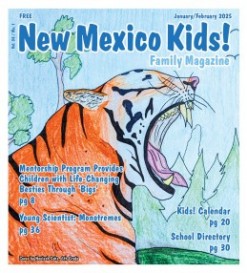Teaching Media Literacy
Teaching Media Literacy
August 11, 2022By TANIA SOUSSAN

Teaching reading and writing is no longer enough to prepare students to navigate our modern world. They also need to know how to access, evaluate and create all kinds of communication – from textbooks to TV news to Twitter.
“In order to function in this society, if you’re not media literate, you’re not literate,” said Pamela Pereyra, a volunteer advocate who wears several hats in the media literacy arena, including New Mexico chapter chair for Media Literacy Now.
Pereyra and others have fought to get state funding for media literacy programs. A $400,000 funding bill sponsored by Democratic state Sen. Bobby Gonzales failed during this year’s legislative session, but a similar amount of money was successfully included in the supplemental general appropriations bill.
Brenda Wagoner, an eighth-grade English teacher at West Las Vegas Middle School, was among a group of middle school social studies and English teachers trained in a pilot program in 2020, just months before the COVID pandemic forced schools to move to remote learning.
Then a first-year teacher, she wasn’t familiar with media literacy but used her new knowledge to embed the concepts into her regular lesson plans. As part of a unit on Greek mythology, Wagoner had her students investigate teen bullying. They played the role of Greek gods in a texting conversation in which they were either bullies or victims. They also created memes based on their characters -- Medusa for a message about pretty hair, for example – and made posters to put up around the school for an anti-bullying campaign.
“That really opened their eyes,” Wagoner said, adding that she now regularly uses various kinds of media in her classroom and adds digital elements to assignments. She also is working to teach parents how using cell phones in classrooms can be beneficial.
“I’m able to captivate my kids and I have a lot more hands-on (learning) in my classroom,” she said.
Pereyra is encouraged by the work Wagoner and other teachers are doing, but says New Mexico needs a long-term, coordinated approach with more teacher training to ultimately get media literacy education into classrooms at all grade levels in schools across the state.
Media plays a role in every part of our lives through books, posters and signs, websites and more. Even a fast-food restaurant logo or a stop light is media, said Pereyra, who has been teaching media literacy for more than 20 years and is also the founder and CEO of Media Savvy Citizens, which works with educators around the state.
Kelly Pearce, a former newspaper reporter who now works as an instructional coordinator for Rio Rancho Public Schools, also took part in the 2020 training. At the time she was teaching an elective class on media literacy.
Although she is no longer in the classroom full time, she continues to advocate for media literacy education.
“In a world dizzy with technology, our students need mechanisms to traverse media and become wise cyberspace citizens who think and communicate critically,” Pearce said at a hearing before the state Senate Education Committee in February. “Media literacy should be injected into all of our New Mexico schools so today’s children are the savvy media-influenced leaders of tomorrow.”
Other states are addressing media literacy education, according to a recent report from online learning company Learnics. Illinois has a clear policy mandate for media literacy lessons in the classroom, and Texas created the first teacher training requirement, for example.
Media literacy should be part of professional learning for educators and embedded in all curriculums, Pearce said. Students need to be taught lessons about how what they post on social media today could affect their future employment, how to find credible sources when researching topics online or reading news reports and how to communicate in different formats.
“That gives you power that makes you an informed citizen in our society,” she said.
Pereyra agreed and added that critical thinking is a key component of media literacy.
“Today’s students need skills to understand vast amounts of information to be effective communicators and participants in society,” she said.

